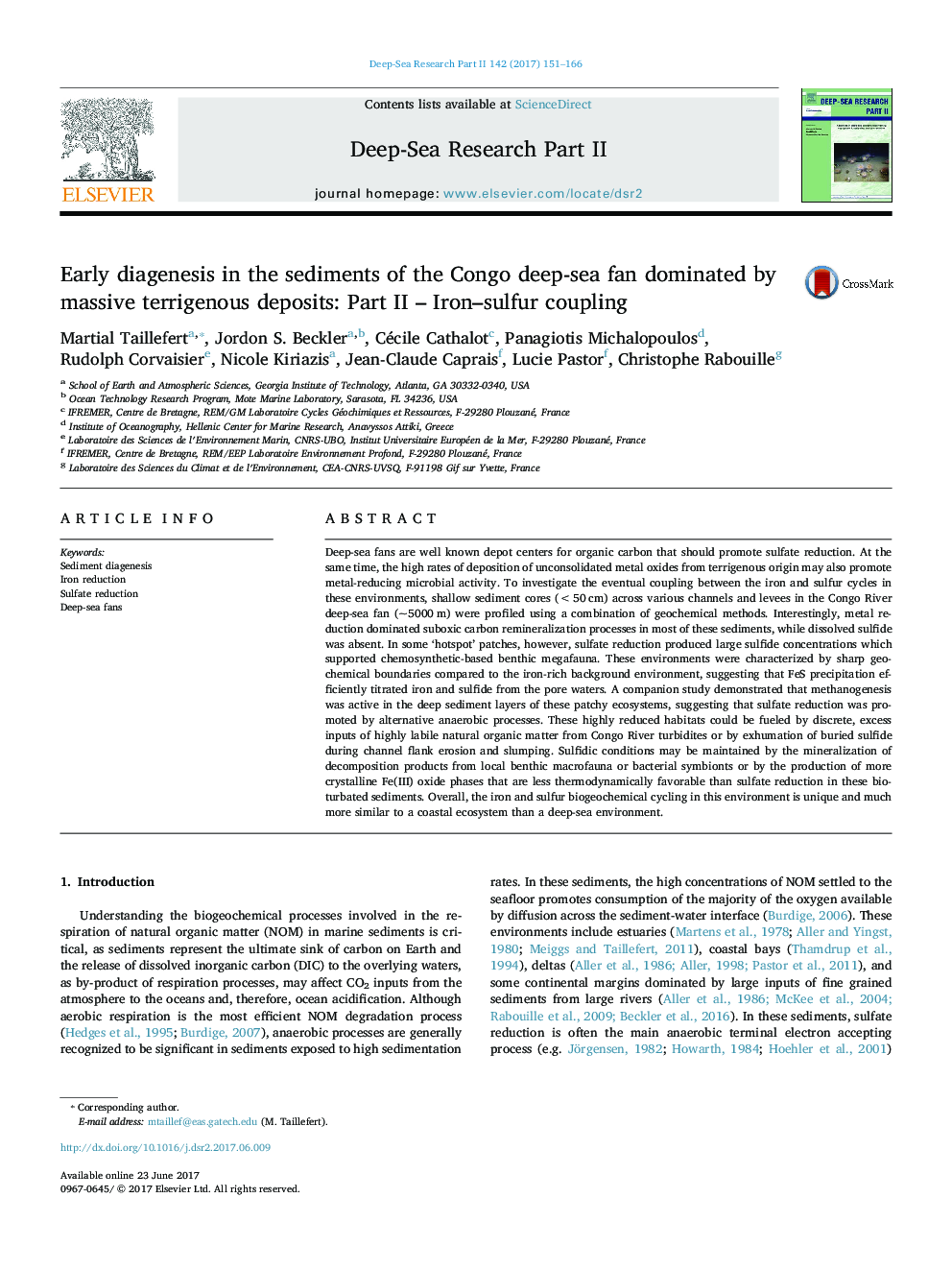| کد مقاله | کد نشریه | سال انتشار | مقاله انگلیسی | نسخه تمام متن |
|---|---|---|---|---|
| 5764806 | 1626400 | 2017 | 16 صفحه PDF | دانلود رایگان |
Deep-sea fans are well known depot centers for organic carbon that should promote sulfate reduction. At the same time, the high rates of deposition of unconsolidated metal oxides from terrigenous origin may also promote metal-reducing microbial activity. To investigate the eventual coupling between the iron and sulfur cycles in these environments, shallow sediment cores (< 50Â cm) across various channels and levees in the Congo River deep-sea fan (~5000Â m) were profiled using a combination of geochemical methods. Interestingly, metal reduction dominated suboxic carbon remineralization processes in most of these sediments, while dissolved sulfide was absent. In some 'hotspot' patches, however, sulfate reduction produced large sulfide concentrations which supported chemosynthetic-based benthic megafauna. These environments were characterized by sharp geochemical boundaries compared to the iron-rich background environment, suggesting that FeS precipitation efficiently titrated iron and sulfide from the pore waters. A companion study demonstrated that methanogenesis was active in the deep sediment layers of these patchy ecosystems, suggesting that sulfate reduction was promoted by alternative anaerobic processes. These highly reduced habitats could be fueled by discrete, excess inputs of highly labile natural organic matter from Congo River turbidites or by exhumation of buried sulfide during channel flank erosion and slumping. Sulfidic conditions may be maintained by the mineralization of decomposition products from local benthic macrofauna or bacterial symbionts or by the production of more crystalline Fe(III) oxide phases that are less thermodynamically favorable than sulfate reduction in these bioturbated sediments. Overall, the iron and sulfur biogeochemical cycling in this environment is unique and much more similar to a coastal ecosystem than a deep-sea environment.
Journal: Deep Sea Research Part II: Topical Studies in Oceanography - Volume 142, August 2017, Pages 151-166
